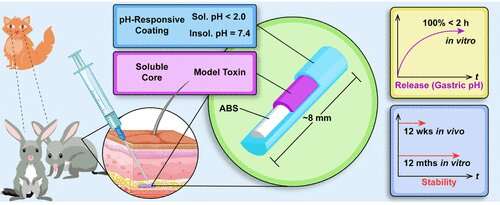August 30, 2022 report
Using poison pills to help protect endangered species in Australia

A team of researchers from the University of South Australia, the University of Adelaide and Ecological Horizons Pty., has implemented a test study to determine if injecting an endangered species with a poison pill might help prevent it from going extinct due to hunting by feral cats. In their paper published in the journal ACS Applied Polymer Materials, the group describes their plan and how well it is working so far.
Prior research has shown that Australia has the worst rate of mammal extinctions in the world, and most of it is due to two main predators—feral cats and foxes. Both are invasive species that were introduced into Australia by humans. Efforts to resolve the problem by eradicating the predators have had some success but not enough to prevent the extinction of 31 species so far. In this new effort, the researchers have taken a new approach—injecting a poison pill into the hide of prey, to kill the predator that eats it. In their case, the prey is the bilby—a small rabbit-like marsupial with a longish snout. Cats have no problem catching them and the little mammals have no natural defenses against them.
To test the idea of injecting them with a poison pill, the researchers embarked on an extensive search for a type of poison that was not poisonous to the bilby but was deadly to cats. They found one called simply 1080 poison. The poison is produced naturally in some plants in Australia, which has allowed the bilby to grow naturally tolerant of it. Cats, however, being an invasive species, die soon after consuming even a small amount.
With the right poison in hand, the researchers set up a test facility. They fenced off a region of native bilby territory and injected several bilbies with the poison pill and then let them roam free inside the enclosure. Cats are known to breach most fenced areas in Australia, so that left the researchers waiting for a breach, and hopefully, a dead cat.
Unfortunately, the timing of the experiment could not have been worse. Just as the researchers were ready with their penned-off bilbies, a mouse population explosion occurred. Millions of mice ran amok across the entire territory, causing havoc and sometimes destruction. With so much easy prey to be had, the cats were not interested in breaching a fence to get at some bilbies, so the experiment never got off the ground. But the researchers have vowed to be patient. They know that soon the mice population will drop back down to normal levels and the cats, which have grown in population with so much food at hand, will be hungry and looking for bilbies.
More information: Kyle Brewer et al, Toward Targeted Invasive Predator Control: Developing pH-Responsive Subcutaneous Implants for Native Mammals, ACS Applied Polymer Materials (2022). DOI: 10.1021/acsapm.2c01041
Journal information: Applied Polymer Materials
© 2022 Science X Network




















